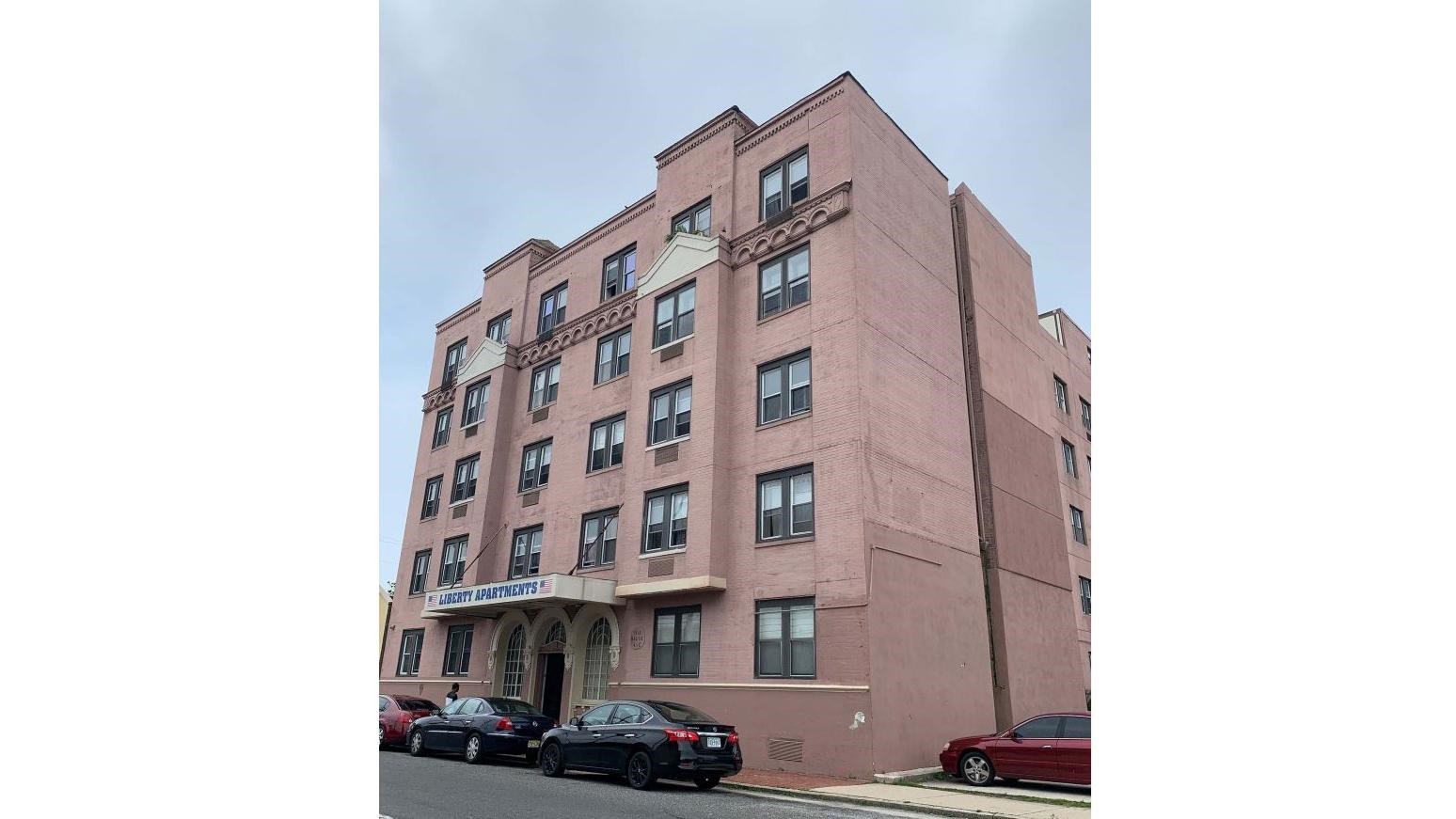Last updated: August 16, 2021
Place
Liberty Hotel

Photo by Corinne E. & Marcio T., courtesy of New Jersey State Historic Preservation Offi
Quick Facts
Location:
1519 Baltic Avenue, Atlantic City, NJ
Significance:
Ethnic Heritage/Black, Entertainment/Recreation
Designation:
Listed in the National Register – Reference number 100005102
OPEN TO PUBLIC:
No
MANAGED BY:
Private
The Liberty Hotel, listed in the National Register of Historic Places in 2020, was an important place of accommodation for African American tourists in Atlantic City, New Jersey during decades of segregation in the early and mid-twentieth century. The Liberty Hotel was constructed in 1928 in the black “Northside” neighborhood during the heyday of Atlantic City’s resort tourism. The five-story, brick, Italian Renaissance Revival-style building provided modern, comfortable lodgings, food, and entertainment to African American visitors and residents when nearly all of the City’s other hotels were closed to black lodgers. The Liberty Hotel was regularly and prominently listed in popular African American-focused travel guides and newspapers of the time, including The Negro Motorist Green Book, Ebony Magazine, and the Baltimore Afro-American. It was a popular choice of lodging for prominent African American entertainers and public-figures, such as boxer Sugar Ray Robinson, singer Mahalia Jackson, entrepreneur Billboard Jackson, and locally significant individuals like Claiborn Morris Cain.
Atlantic City’s identity as one of the most popular seasonal resorts on the East Coast began in the late nineteenth century and reached a peak in the early twentieth century. The City’s world-famous Boardwalk, beaches, luxury hotels, and nightlife scene provided endless opportunities for relaxation and entertainment for individuals and families alike. Atlantic City’s black population grew in parallel with the Great Migration. As African Americans moved out of the South in large numbers many found employment in the City’s tourist establishments. The number of hotels, motels, resorts, restaurants, and entertainment venues that catered to African American tourists who flocked to the City’s Boardwalk and beaches grew in tandem with the City’s African American population. In a city that experienced great loss of its urban fabric in the late-twentieth and early-twenty-first centuries, the Liberty Hotel is among the few surviving examples of a mid-sized hotel that catered to African American tourists.
Atlantic City’s identity as one of the most popular seasonal resorts on the East Coast began in the late nineteenth century and reached a peak in the early twentieth century. The City’s world-famous Boardwalk, beaches, luxury hotels, and nightlife scene provided endless opportunities for relaxation and entertainment for individuals and families alike. Atlantic City’s black population grew in parallel with the Great Migration. As African Americans moved out of the South in large numbers many found employment in the City’s tourist establishments. The number of hotels, motels, resorts, restaurants, and entertainment venues that catered to African American tourists who flocked to the City’s Boardwalk and beaches grew in tandem with the City’s African American population. In a city that experienced great loss of its urban fabric in the late-twentieth and early-twenty-first centuries, the Liberty Hotel is among the few surviving examples of a mid-sized hotel that catered to African American tourists.
